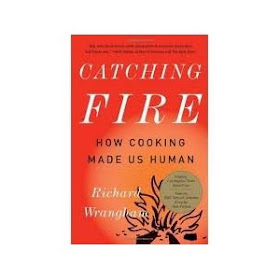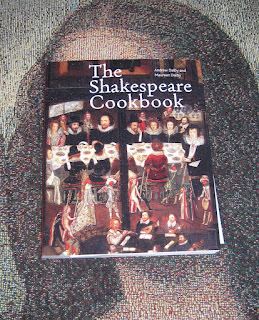I often write about food in novels or other books I have read. I have just found a Poetry Magazine
collection of poems that feature food. Other than the famous one about plums by William Carlos Williams ("This is just to say"), or the Ogden Nash short poems published in the book depicted at right like the one about the parsnip, I couldn't easily think of any food poems. I'm not that much of a poetry reader, as it happens; however, several of these poems appealed to me.
Being a fan of Gertrude Stein, I enjoyed the poem titled "Christian Bérard." I already know quite a bit about what Gertrude Stein liked to eat, because of the
Alice B. Toklas Cookbook. Here are the first lines of the poem:
Christian Bérard
BY GERTRUDE STEIN
Eating is her subject.
While eating is her subject.
Where eating is her subject.
Withdraw whether it is eating which is her subject. Literally
while she ate eating is her subject. Afterwards too and in between. This is an introduction to what she ate.
She ate a pigeon and a soufflé.
That was on one day.
She ate a thin ham and its sauce.
That was on another day.
She ate desserts.
That had been on one day.
She had fish grouse and little cakes that was before that day.
She had breaded veal and grapes that was on that day.
After that she ate every day.
Very little but very good.
She ate very well that day.
What is the difference between steaming and roasting, she
ate it cold because of Saturday.
Remembering potatoes because of preparation for part of
the day.
There is a difference in preparation of cray-fish which makes a
change in their fish for instance.
What was it besides bread.
Why is eating her subject.
There are reasons why eating is her subject.
...
Two other poems that I liked are by poets I was previously unfamiliar with: Paul Blackburn and Victor Hernandez Cruz. And there are so many more!
The beginnings of these poems:
The Café Filtre
BY PAUL BLACKBURN
Slowly and with persistence
he eats away at the big steak,
gobbles up the asparagus, its
butter & salt & root taste,
drinks at a glass of red wine, and carefully
taking his time, mops up
the gravy with bread—
The top of the café filtre is
copper, passively shines back, & between
mouthfuls of steak, sips of wine,
he remembers
at intervals to
with the flat of his hand
the top removed,
bang
at the apparatus,
create the suction that
the water will
fall through
more quickly
Across the tiles of the floor, the
cat comes to the table : again.
“I’ve already given you one piece of steak,
what do you want from me now? Love?”
...
Red Beans
BY VICTOR HERNÁNDEZ CRUZ
Next to white rice
it looks like coral
sitting next to snow
Hills of starch
border
The burnt sienna
of irony
Azusenas being chased by
the terra cotta feathers
of a rooster
...








































